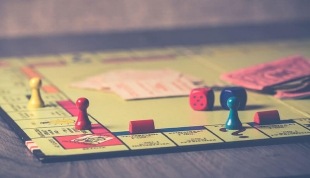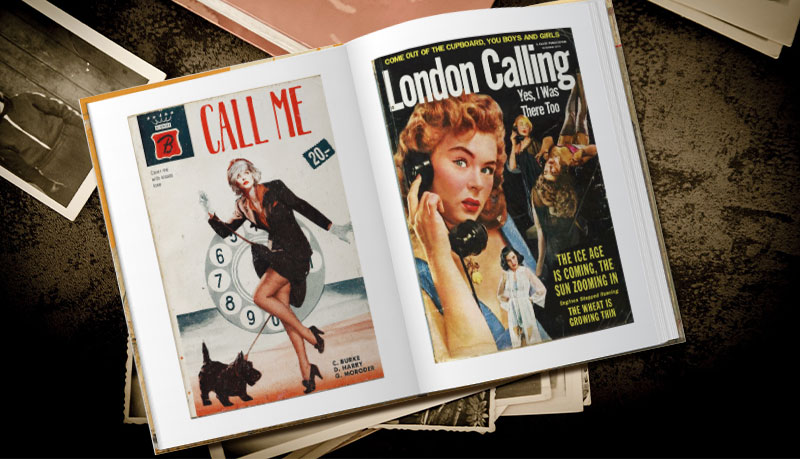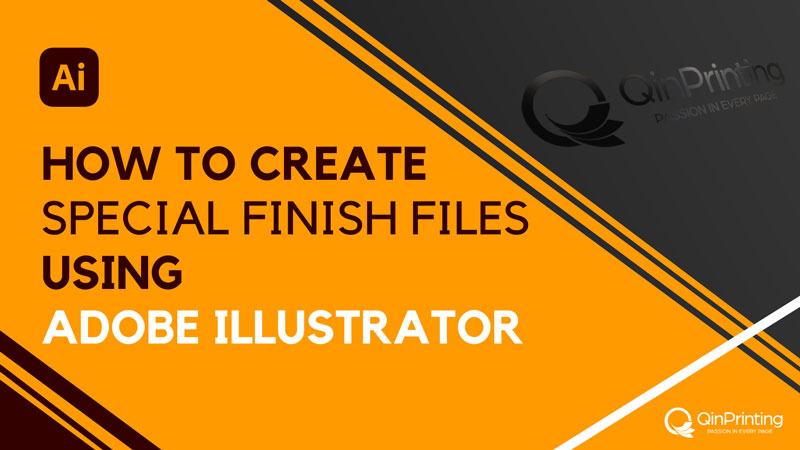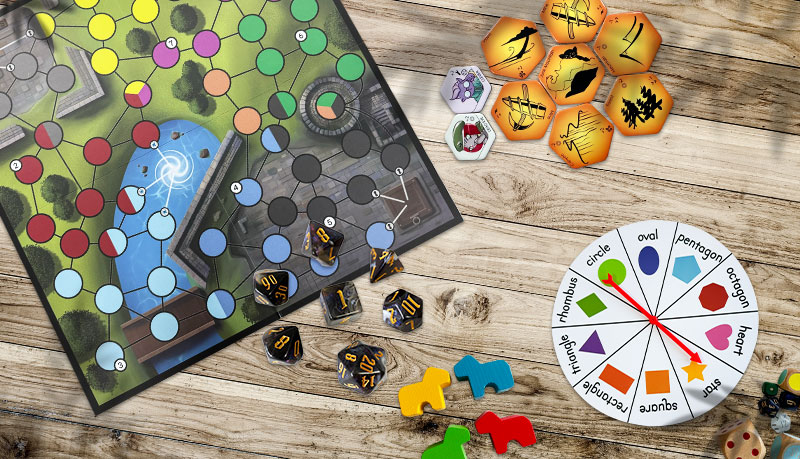We walk you through all the essentials you'll need to get down—over and above designing a game that's fun and challenging to play—if you want to successfully self-publish your indie board game
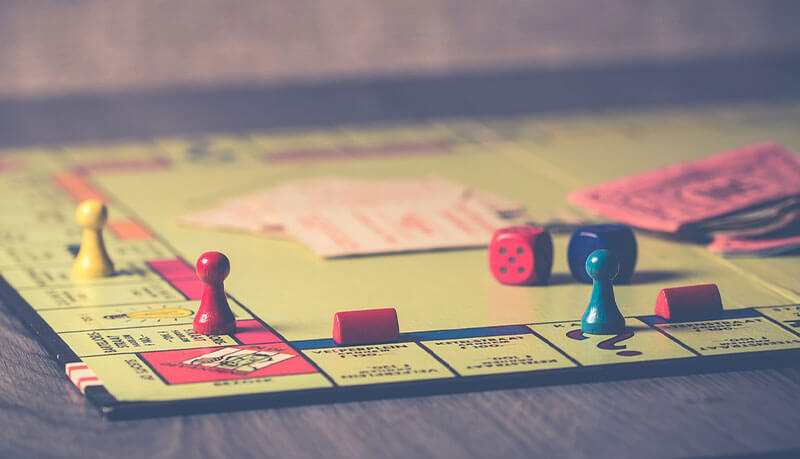
Setting out to self-publish a board game as an independent designer is undoubtedly both exciting—and it certainly should be fun—and challenging on many levels. The process can get really complex, involving a myriad of tasks, from conceptualizing unique game themes, mechanics, components, and rules to building a brand that speaks to your target players or player communities. Over the years, we've seen that many designers struggle with identifying the best practices to help them make sure that their game stands out in an increasingly crowded marketplace, especially with the recognition that you're up against the big publishers like Ravensburger, Hasbro, and Mattel. Common concerns we often hear include how to market the game effectively, secure reliable and sufficient funding, and manage the complexities of production timelines and distribution.
To get to grips with this, understanding market trends and player preferences is essential to create a commercially viable product. Without this knowledge, even the most innovative game concepts can fall flat. For you, as an indie board game designer, engaging with the tabletop games community both online and offline and leveraging any industry networks in which you can get a foothold will provide invaluable insights and support. The ability to balance creativity with practical business acumen is always a key to success. Several of the most successful projects we've seen have been collaborations between one partner with the more creative bent and the other with a sound business sense. But equally, we see solo game developers making it work, too. You just need to be open to learning the knowledge and skills that you don't already possess.
In this post, we've pulled together all the essential tips and strategies for independent board game designers like you to begin to handle the practical and business side of your enterprise. Obviously, in a few thousand words, we won't be able to cover everything in minute detail (you'd need several books for that!) But we'll get you started on the road and hopefully give you a gentle push in the right direction. From building a strong brand identity to using crowdfunding platforms effectively, we will provide you with actionable advice to help you negotiate the complexities of the indie board game industry and give yourself the best chance of achieving your self-publishing goals.
Build a strong brand identity
First things first. If you look at the most successful indie board game designers, and those who started out that way and eventually moved into the mainstream, you'll notice that their games and names both have something you could call “iconic” about them. Even people who don't play many board games might recognize their logos or have at least a vague idea of their most famous games. What do we mean by “iconic” in this case? What does it mean? What it means is that to succeed as an independent board game designer, it's essential to build a strong brand identity. This involves creating a unique and recognizable brand image just exactly as the big name publishers—and other successful indies—have done. Branding is a whole universe in its own right, but to get you started, consider the following tips to build a strong brand identity:

- Define your brand values and mission statement: You need to establish a clear identity by articulating what your brand stands for and what you aim to achieve. This foundation will guide your branding efforts and ensure consistency across all channels. Your values and mission should reflect your passion for game design and your commitment to quality and innovation. Now, if you think that doesn't apply to you, you're wrong. People play games for all kinds of reasons: to enjoy fierce competition; to engage cooperatively in problem-solving; to hang out with their friends; to bring the family together; to have a laugh; and a dozen other reasons again. You can't aim your game at all of them. So, you need to choose who your game is for and the way you communicate that is through your “brand”—the images, language, style, logos, that you choose. Just a simple example, a designer aiming at young kids and one aiming at the adult role-playing market will have a very different look and feel to their products, logo, and name.
- Design a visually striking and memorable logo: So, we've mentioned the logo a few times. Whatever market you're aiming for, your logo is the face of your brand and should be distinctive and reflective of your brand's mission (make 'em laugh, intellectual challenges, thrills-and-spills, etc.) Work with a professional designer if you can to create a logo that stands out and expresses the spirit of your games. Think about how the logo will look across various media, including game boxes, websites, and social media profiles. If you're going completely D.I.Y. then at least check out the logos on other games and learn from them as you develop your own.
- Develop a consistent visual style: Another factor which is so important for both communication and recognition is to maintain uniformity in your visual elements, such as color schemes, typography, and graphic styles, across all marketing materials, including your game components and packaging. A cohesive visual identity helps build brand recognition and trust. So work on making sure that your visual style fits well with the themes and tone of your games to create a seamless brand experience for your players and potential customers. You know, we read somewhere that there are at least 250 different “Barbies”. They're all different; but they're each instantly recognizable as a Barbie. That.
- Engage with your market through social media and other channels: You can't expect any of this to happen without you. No board game, however good, sells itself. Build brand awareness and loyalty by interacting with your community regularly. Share behind-the-scenes content of your WIP, and include the difficult moments and the mistakes you make along the way as much as the breakthroughs and successes; deliver updates on game development; and get involved in real, honest conversations with your followers and supporters. Platforms like Twitter, Instagram, Facebook, and YouTube are excellent for reaching a broad audience and fostering a community around your brand. But a “post-and-forget” approach will get you nowhere at all. You must interact.
- Collaborate with influencers and reviewers: This can be trickier if you're completely unknown, but it's still worth working on. Look for any opportunities you can find to partner with well-known figures in the board game community to promote your game brand and reach a wider audience. Influencers and reviewers can provide credibility and visibility for your games. Offer them early access to your games for review or feature them in your promotional content to leverage their reach. For example, you could write a review of one of their games on your blog and then tag or mention them when you post the blog to your social media.
By focusing on building a strong brand identity around your game, you can differentiate yourself from your competitors and attract dedicated fans who are genuinely interested in what you're trying to do. A compelling brand story and consistent visual presence can create a lasting impression in the minds of eventual customers and, little by little, drive long-term success.
Understand the market
To create a commercially viable board game, it's so important to understand your target audience and stay updated on market trends. Here are some tips to help you gain a deeper understanding of your target audience and market trends. So, with that in mind, we've put together these core ideas for you to follow through on:
- Conduct market research: Identify your target demographic's preferences, interests, and purchasing behaviors through surveys, focus groups, and online research. Understanding what your audience likes and dislikes can inform your game design and marketing strategies. It takes persistence, sure, but eventually you can get a lot of information from your social media, forums, subreddits, and also don't forget live surveys at games nights, meetups, and conventions.
- Playtest your game widely: You'll have heard this before—and we bang on about it all the time—but it's so important to playtest and gather feedback to refine your game mechanics and design. Playtesting is essential for identifying potential issues and making sure that your game is enjoyable and engaging for players. You can't playtest too much, to be honest. Try running multiple rounds of playtesting with different groups to get diverse perspectives and refine your game iteratively.
- Stay updated on the latest trends in the board game industry: Follow industry news, join forums, and subscribe to newsletters to keep abreast of popular themes, mechanics, and art styles. While jumping on a bandwagon or imitating someone else's idea may be a waste of time, just keeping an eye on persistent trends can provide inspiration and inform your design choices, helping you create games that better find a place within with current market demands. Attending webinars and online panels hosted by industry experts can also offer valuable insights.
- Attend board game conventions and industry events: Network with other designers and gain insights into market trends. Conventions like Gen Con, Spiel, and PAX Unplugged are great opportunities to showcase your game, gather feedback, and learn from industry leaders. Participate in panels and workshops to expand your knowledge and connect with potential collaborators.
- Analyze successful board games within your target genre: Study what elements players like by examining popular games in your niche. Look at their mechanics, themes, artwork, and player feedback to understand why they are successful. This analysis can guide your design process and help you identify what makes a game appealing to your intended audience.
By understanding better the people who are likely to play your game and what they will enjoy about it and by increasing your awareness of market trends, you can help you to design games that are not only fun but also commercially successful.
Create an exciting and unique game
This might seem like a total no-brainer but you need to make a really good game! We've written a comprehensive guide to board game design which goes into detail about every aspect of game development. We recommend that you read it, bookmark it, and come back to study it frequently. However, to give you a few key takeaways right now:
- Brainstorm new and original ideas: See if you can come up with themes, objectives, and game mechanics that haven't been used extensively in existing games. “Think outside the box” as they say and experiment with different combinations of mechanics to create something truly unique. Coming up with totally new ideas is a tough call, but coming up with new takes and original combinations of existing ideas is possible. You might think about blending mechanics from different genres or taking an established format and transposing it to a new thematic setting (detectives in space, anyone?)
- Test your game thoroughly: Make sure all aspects of your game are balanced, intuitive, and enjoyable for players by regular playtesting throughout the design process. Playtesting helps to highlight any issues with the mechanics or over-complex or dysfunctional rules, for example, and gives you opportunities to adjust and refine everything until you get a smooth player experience that doesn't interfere with the pleasure of play. Balance is an essential concept to get to grips with so that all players have a fair chance of winning and that the game remains challenging and fun.
- Incorporate elements of surprise, strategy, and player interaction: Keep the gameplay engaging and dynamic by adding twists, strategic choices, and opportunities for interaction between players. Surprise elements can keep players on their toes, while strategic depth can enhance replayability. Interactive mechanics can foster a sense of competition or cooperation, adding to the overall enjoyment.
- Draw inspiration from various sources: Look beyond board games for ideas, such as video games, sports, or even everyday activities. Inspiration can come from anywhere, and incorporating diverse influences can lead to innovative themes and mechanics. Study game design theory and stay informed about different approaches to game mechanics.
These ideas are just a taster of the depth and complexity of the processes involved in good board game design. Again, unless you are already well-educated in all aspects of game development, we strongly recommend that you study our guide linked to above. It covers literally everything you need to know to make a top-notch game that players will love. But now let's turn to the problem of funding your game development, production, marketing, and distribution. We think the best way for most indies to approach this is through crowdfunding platforms. While there are several excellent platforms out there, we have most experience with Kickstarter and we recommend it as an excellent and easy-to-use platform with a ready-made and enthusiastic base of keen board game fans, eager to finance great projects.
Get crowdfunding right
Crowdfunding platforms like Kickstarter can be a powerful tool for independent board game designers to raise capital, build awareness, and drive early sales. But they don't work on automatic. You must put in the work; both in terms of developing an excellent, engaging, and persuasive pitch and in keeping your supporters updated and encouraged. Here are some tips to use crowdfunding platforms to your best advantage and generate a successful campaign for your board game idea:
- Plan and prepare your crowdfunding campaign with care: Set realistic funding goals and create high quality, personalized campaign content, including an informative and entertaining video and a detailed project description. Highlight what makes your game unique and why backers should support it. Break down your budget transparently to build trust and show how funds will be used.
- Build a community before launching your campaign: It's always a good idea to start conversations with potential backers before you launch your campaign; through social media, newsletters, your blog, and online forums. Try to generate interest and excitement and build a following that you can pro-actively invite to support your campaign from day one. Pre-launch activities like teaser posts, sneak peeks, quizzes, and test plays with board game enthusiasts and communities can build momentum and make sure your launch is effective.
- Offer high-value rewards and stretch goals: You'll need to incentivize backers with exclusive content, limited editions, and unique bonuses. Stretch goals can keep the campaign exciting and motivate higher pledge amounts. Think about offering behind-the-scenes access or personalized components to add value for your backers.
- Provide regular updates to your backers: As well as updates on your campaign page, we suggest building an email list and sending out a newsletter to your backers and supporters to keep them engaged and informed about the progress of your game. Transparency and consistent communication build trust and maintain enthusiasm throughout the campaign. Share milestones, challenges, and successes to keep backers involved and invested in the project.
- Show appreciation to your backers: Deliver high-quality products on time and provide excellent customer service. Post-campaign, continue to engage with your backers to foster a loyal community and offer exclusive updates or early access to future projects as a token of gratitude.
A well-executed campaign can not only fund your project but also create a strong base of enthusiastic supporters. For a deeper dive into all the important details of how to use Kickstarter to fund your game, read this: Kickstarter for Board Game Designers
Talk to us. We're here to help!
Getting to grips with everything you need to do and understand, making a go of it in the world of board game design and self-publishing, can be challenging, sure, but with the right strategies and partnerships, independent designers like you can achieve remarkable success. We've seen it happen; it happens every day. Building a strong brand identity, understanding your market, creating unique games, using crowdfunding platforms, and working with reliable partners like QinPrinting are all essential steps to get you to your destination.
By following the advice we've outlined in this post, you can alleviate many common concerns right from the get-go and focus on bringing your creativity to your campaign. With dedication and informed decision-making, you can create a game that not only stands out in the market but also is fun and rewarding to play and delights players, making a strong foundation for long-term success in the industry. At QinPrinting, we work daily with talented game devs both new and experienced. If you have a great idea and you're keen to go ahead with your board game development and campaign, we should talk. Give us a call on +1 951 866 3971, shoot us an email to [email protected], or connect with us on social media. We look forward to working with you!





